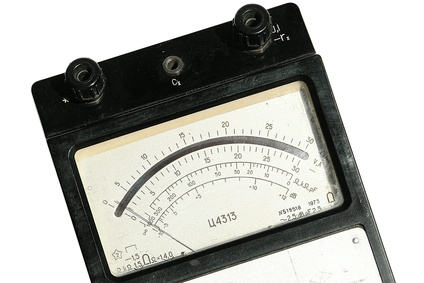
Before 1996, each manufacturer had a different diagnostic systems. Ford used Electronic Engine Control, and the fourth version (EEC-IV) came into use with the 1984 vehicles. Troubleshooting engine problems and EEC-IV fault codes involved a process more primitive than today's handheld scanners. Still, initiating an older Ford's self-test is still a relatively easy task. There are two processes for checking EEC trouble codes. One involves counting how many times the check engine light flashes, and the other is necessary for older Fords that do not feature a check engine light.
Put your key into the ignition and start the car. Let the vehicle idle until the engine is fully warmed. Wait 5 to 10 minutes, or rev the engine at 2000 rpm for two minutes.
Turn the engine off and engage the parking brake. Make sure the air conditioning is switched off completely.
Open the hood of the car and locate the Self Test Outlet. The location will differ by model of Ford. The STO is trapezoidal in shape and features six ports. Nearby will be the Self Test Input. It will feature only one port.
Place a jumper wire into the self test outlet's grounding port. This will either be the right slot on the top row, or the left-most slot on the bottom row. Consult the owner's manual to be certain you are using the right slot.
Turn the ignition key to "On." The codes will be relayed by the check engine light flashing. Count these flashes. The trouble codes themselves are either two or three digit numbers. There will be a short pause between numbers. For example, code 14 will have the check engine light flash once; then there will be a small pause, and next the light will flash four more times. Longer pauses between lights indicate the end of one trouble code, and the beginning of another. Write down all the codes.
Turn the Ford off. For EEC code definitions, consult one of the many OBD-I websites available.
Start the vehicle and let the engine warm. Then, turn the engine off.
Set the volt meter to read between 0 and 15 DC volts. Connect your volt meter's positive lead to the postive terminal on the Ford's battery. Then, connect negative lead to the self test outlet's grounding slot.
Connect the self test outlet's signal return slot to the self test input with a jumper wire.
Turn the Ford "On," but do not start the engine. Count the times the needle sweeps. There will be a small pause between numbers within the code. Code 14, for example, will have one needle sweep, followed by a pause and then four more needle sweeps. Long pauses indicate the beginning and end of a new trouble code.